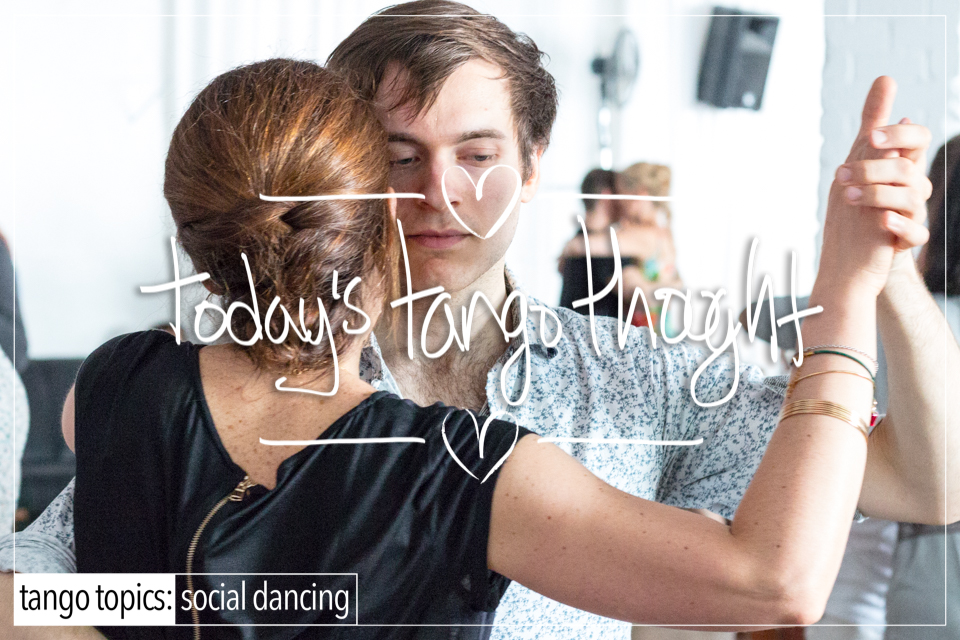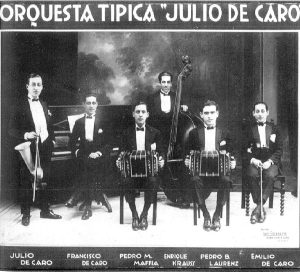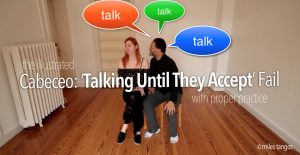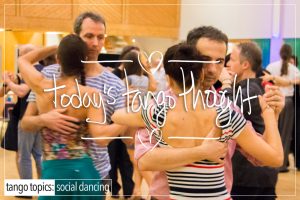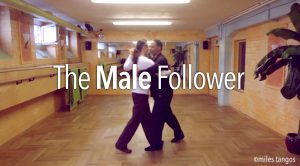For a lot of people, they come to tango and have their requisite glass (or two) of wine and then they dance. They walk in the room, put on their shoes and make a bee-line for the bar and order their ‘glass’ of wine. Then they proceed to sit for a tanda or two drinking it, and then they ‘dance’.
Stop and think about something for a moment: Wine is alcohol (duh). Alcohol is a depressant, not a stimulant, it lowers our inhibitions and ability for rational thought. It allows us to do things while under its effects (inebriation) that we wouldn’t normally do. Like for instance, ‘drunk dial the ex’, or taken to the extreme – driving while intoxicated (tsk, tsk, tsk). Typically the average ‘wine’ drinker never gets beyond the tipsy stage….they can ‘hold their liquor’ as it were.
One thought that passes through your mind in this ‘delighted’ state is that you ‘feel’ better as a dancer, as far as you’re concerned. From your perspective, you are a lot more ‘free’ with the music and your partners when you’ve had a glass of wine. And you might even believe that your dancing improves as a result. Ahem. That’s not the case. It’s really not. It’s a perception. Your response times go down not up, you miss crucial subliminal cues, your sensitivity drops off and you become less aware (not more) of how much pressure, tension, and force you’re using to either lead or follow your partner. And that’s just the tip of the iceberg.
This is probably something you don’t want to hear, and you’re not going to change your behavior because some web page by some obscure (ha!) tango teacher tells you that wine has a deleterious effect on the dancer. While it may ‘take the edge off’ one’s fear, apprehension, or trepidation, wine does impair your balance, which thereby affects your stability, and furthermore, it dulls the effect of hyper-awareness which is an absolute requirement to dancing to your optimum efficiency.
You may have noticed that the better dancers in the room, do not drink wine, beer, at all. Not until after they are done for the night. They’ll wait a while until they’ve had their important dances before they’ll have a beer or a glass of wine, and even then…it’s questionable.
And just so that we’re absolutely crystal clear, because someone will invariably read this and get all indignant about their drinking habits. No one is calling you alcoholic, or that you have a drinking problem, or that you feel you must respond with “I only have X# of glasses…”. No one is judging you. This topic is here to get you to think about your choices. Nothing more than that. Get a grip, facts is facts, not alternative facts, but hard cold evidence that is centuries old. Alcohol causes problems. How hard is that ?
To the Virgins, to Make Much of Time
The Tango Topics Opinion: Wine and Dancing do not mix. There are many people that will tell you the polar opposite, or say that having a glass of wine while they’re dancing, or beer, or any alcohol improves the experience for them. The medical and scientific research on the subject of wine or alcohol and anything you’re doing suffers. Why is this so hard to get ? The reason is really simple, because people like their vices. It’s that simple. Sadly. The author hasn’t had a drop of alcohol in 20 years at the time of this writing. Not because he’s an alcoholic and can’t control his liquor. No, it’s because he learned a very basic fact early on that Alcohol in any form at any level does one no good at all. It impairs one’s mental faculties, it generates a false perception of the world, and when it comes to dancing…it’s just not going to help you in any way, shape, or form.
That said.
No matter what this Tango Thought reports to you, no matter the science involved, no matter what is written here, you’re going to continue to do what you have always done because you like it, because it’s comfortable for you, and because you can. Why stop doing something if it causes no harm in the first place ? Right ? You’re right. This life is very short, so why not grab all the gusto while you can. Or as Robert Herrick in his poem ‘To the Virgins, to Make Much of Time‘, “Gather ye rosebuds while ye may….”, so why not ? Right ?
Assuming you’ve gotten this far, and assuming you haven’t throw out the baby yet, here’s a thought: Try dancing without the wine/beer and see what happens. For this to have any real effect, try it for a whole month and see what happens to your dancing as a result.

